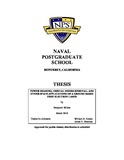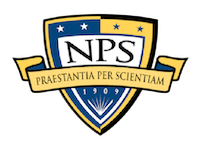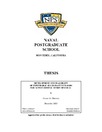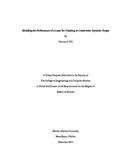Power beaming, orbital debris removal, and other space applications of a ground based free electron laser

Download
Author
Wilder, Benjamin A.
Date
2010-03Advisor
Colson, William B.
Newman, James H.
Metadata
Show full item recordAbstract
When compared to other laser types, the Free Electron Laser (FEL) provides optimal beam quality for successful atmospheric propagation. Assuming the development and deployment of a mega-watt (MW) class, ground or sea based FEL, this thesis investigates several proposed space applications including power beaming to satellites, the removal of orbital debris, laser illumination of objects within the solar system for scientific study, and interstellar laser illumination for communications. Power beaming simulations are conducted within the Satellite Tool Kit (STK) program to determine the frequency of accesses between a satellite and one or more ground stations for multiple orbital profiles. FEL illumination of orbital debris is modeled to determine the thermal effects on a representative aluminum debris particle. FEL illumination of the Lunar and Martian surfaces is modeled to determine the relative laser and solar spectral intensities at these ranges. FEL illumination at interstellar ranges is modeled and discussed to determine our ability to communicate or detect laser communications over interstellar ranges.
Rights
This publication is a work of the U.S. Government as defined in Title 17, United States Code, Section 101. Copyright protection is not available for this work in the United States.Collections
Related items
Showing items related by title, author, creator and subject.
-
DEVELOPMENT AND FEASIBILITY OF EXPENDABLE SPACECRAFT PAYLOADS FOR ACTIVE ORBITAL DEBRIS REMOVAL
Chroman, Connor G. (Monterey, CA; Naval Postgraduate School, 2023-12);Currently, there are over a thousand large-scale objects in low earth orbit composed of derelict satellites and spent rocket parts that have no means of de-orbiting on their own within a reasonable amount of time and are ... -
Modeling the Performance of a Laser for Tracking an Underwater Dynamic Target
Dill, Thomas J. (Monterey California. Naval Postgraduate School, 2014-12);Options for tracking dynamic underwater targets using optical methods is currently limited. This thesis examines optical reflectance intensities utilizing Lambert’s Reflection Model and based on a proposed underwater laser ... -
A platform independent application of Lux illumination prediction algorithms
Lester, Michael Theodore (Monterey, California. Naval Postgraduate School, 1994-06);Naval Aviators require prior knowledge of the time and location of astronomical phenomena in order to properly plan and execute combat and training operations during the hours of darkness using Night Vision Devices (NVD's). ...


 10Mar_Wilder.pdf (3.116Mb)
10Mar_Wilder.pdf (3.116Mb)

